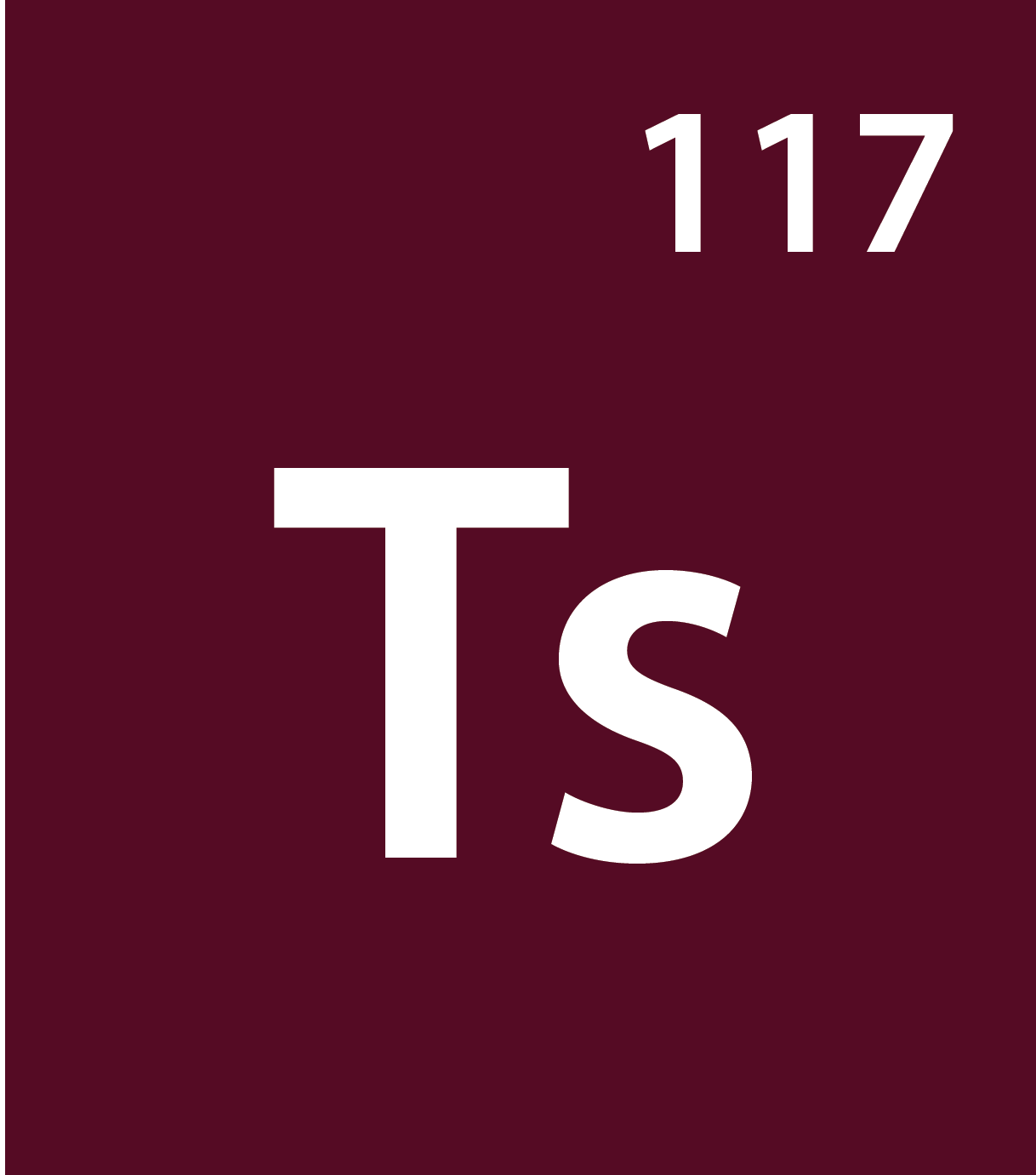Tennessine (Ts)
Tennessine has no naturally-occurring isotopes.

Tennessine is a superheavy artificial chemical element, previously known as eka-astatine or simply “element 117.” It is the second-heaviest of all the elements that have been created so far and is the second-to-last element of the 7th period of the periodic table. An article published in Physical Review Letters on April 5, 2010, claims the identification by a joint Russian-American collaboration of six atoms of the isotopes Ununseptium-293 (five atoms) and Ununseptium-294 (one atom) in fusion reactions between Calcium-48 and Berkelium-249. Decay chains involving eleven nuclei were identified by means of the Dubna Gas Filled Recoil Separator. The claims have not been confirmed. The name Tennessine recognizes the contribution of the Tennessee region, including Oak Ridge National Laboratory (ORNL), Vanderbilt University, and the University of Tennessee at Knoxville, to superheavy element research, including the production and chemical separation of unique actinide target materials for superheavy element synthesis at ORNL’s High Flux Isotope Reactor (HFIR) and Radiochemical Engineering Development Center (REDC).
Properties of Tennessine
| Name | Tennessine |
| Symbol | Ts |
| Atomic number | 117 |
| Atomic weight | [294] |
| Standard state | Presumably a solid at 298 °K |
| CAS Registry ID | 87658-56-8 |
| Group in periodic table | 17 |
| Group name | Halogen |
| Period in periodic table | 7 |
| Block in periodic table | p-block |
| Color | Unknown, but probably metallic and dark in appearance |
| Classification | Unknown |
| Melting point | No data available |
| Boiling point | No data available |
| Density of solid | 7.2 g/cm3 (predicted) |
| Electron configuration | [Rn]5f146d107s27p5 (predicted) |



